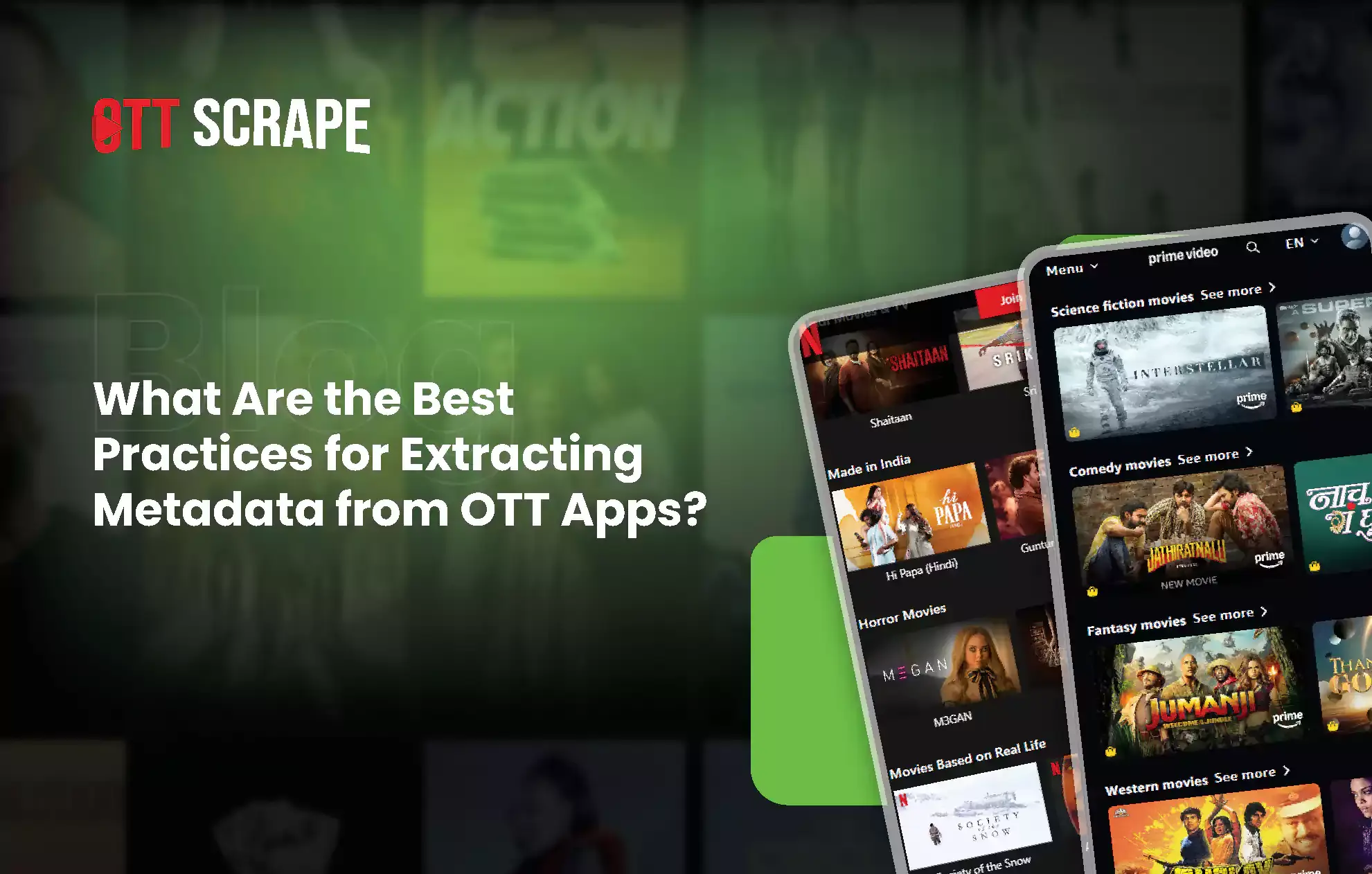
Introduction
Over-the-top (OTT) platforms have revolutionized how people consume media, offering a vast array of movies, TV shows, documentaries, and more directly to users' screens. As these platforms grow in popularity, the need for efficient content management has become more critical than ever. This is where metadata scraping comes into play. By extracting metadata from OTT apps, content providers, marketers, and data analysts can enhance content management, improve user experience, and optimize the overall performance of their platforms.
In this article, we will explore the concept of OTT app scraping, the importance of metadata in content management, the challenges involved in scraping, and the best practices for extracting metadata effectively.
Understanding OTT App Scraping
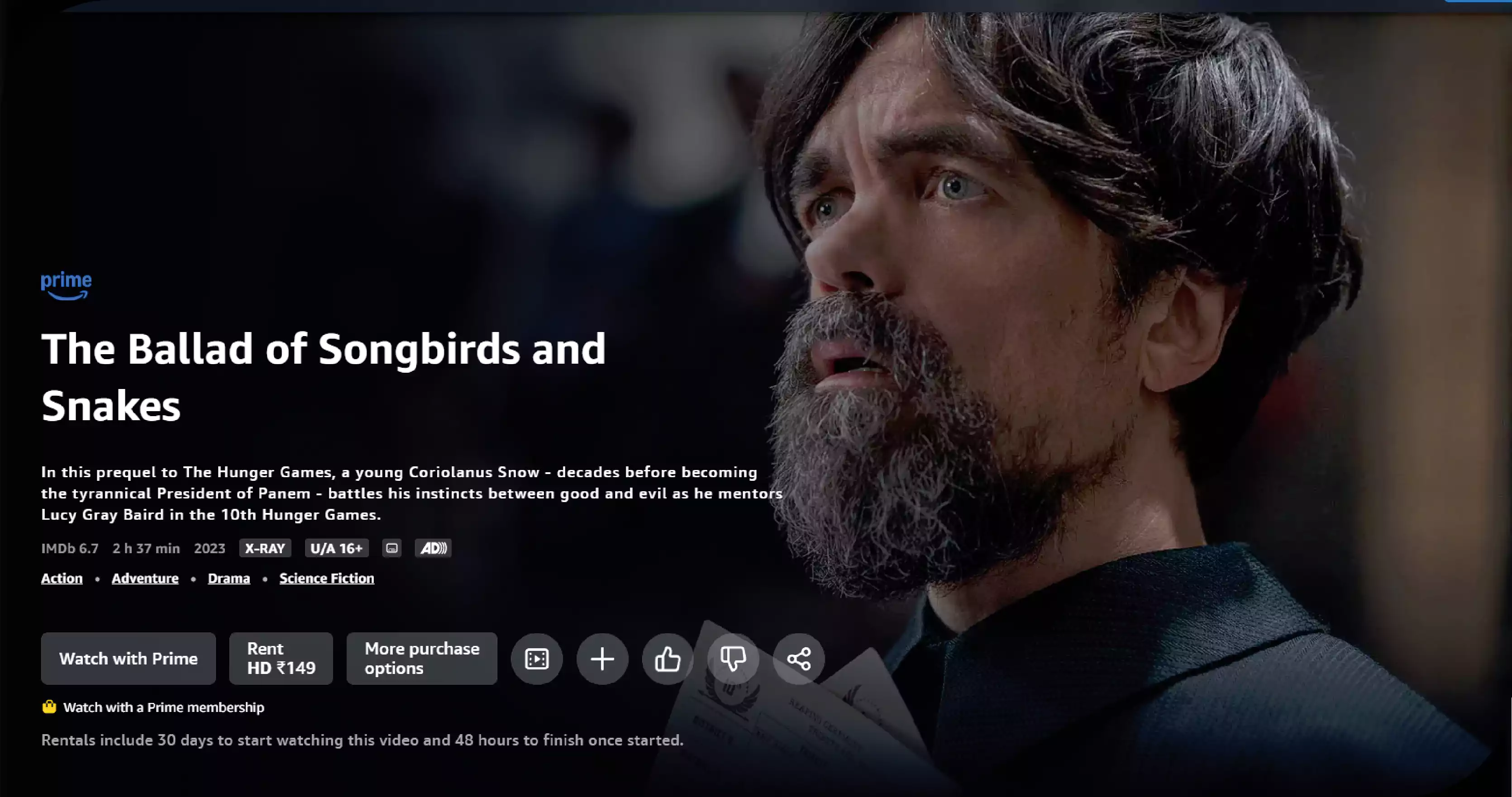
OTT app data scraping involves collecting data from OTT platforms such as Netflix, Amazon Prime Video, Disney+, and Hulu. This data includes a wide range of metadata associated with the content available on these platforms, such as titles, descriptions, genres, cast and crew information, release dates, ratings, reviews, and more.
Scraping OTT apps allows content managers to compile comprehensive datasets that can be used to manage and organize content more efficiently. These datasets can also provide valuable insights into user preferences, content trends, and the performance of different media assets on the platform.
The Importance of Metadata in Content Management
Metadata is the backbone of any content management system. OTT apps data scraping services provide essential information about the content, enabling users to search, sort, filter, and discover media assets quickly. For OTT platforms, metadata is crucial for several reasons:
1. Content Discovery: Metadata helps users discover content by providing relevant information such as genre, cast, director, etc. Accurate and detailed metadata improves search results and recommendation systems, improving user experience.
2. Content Organization: Metadata allows content managers to categorize and organize media assets effectively. By tagging content with appropriate metadata, managers can create structured libraries that are easy to navigate and maintain.
3. User Engagement: High-quality metadata enhances user engagement by offering detailed information about the content. When users have access to comprehensive metadata, they are more likely to watch, rate, and review content.
4. Analytics and Reporting: Metadata is essential for generating reports and analytics that provide insights into content performance, user behavior, and market trends. This data-driven approach helps make informed decisions about content acquisition, production, and marketing strategies.
Step-by-Step Guide on Scraping Metadata: Movie Titles, Cast Information, and Genres
Scraping metadata from OTT platforms, such as movie titles, cast information, and genres, requires a systematic approach to ensure accuracy and efficiency. Below is a step-by-step guide to help you extract this data:
Step 1: Understand the Legal and Ethical Implications
1. Review Platform's Terms of Service:
• Check the OTT platform's terms of service to understand the legal restrictions related to data scraping.
• Some platforms may offer APIs for data access. If available, consider using the official API instead of scraping.
2. Respect Copyright and Privacy Laws:
• Ensure your scraping activities do not violate copyright or privacy laws.
• Avoid using the scraped data for purposes that might infringe on intellectual property rights.
Step 2: Set Up Your Environment
1. Choose Your Programming Language:
• Python is a popular choice due to its robust libraries for web scraping, such as BeautifulSoup, Scrapy, and Selenium.
2. Install Required Libraries:
• Install the necessary libraries using pip
pip install requests beautifulsoup4 selenium3. Set Up a Web Driver (for Dynamic Content):
• If the OTT platform uses dynamic content (e.g., JavaScript to load movie data), install a web driver like ChromeDriver for Selenium:
pip install chromedriver-binaryStep 3: Inspect the Website Structure
1. Access the Target OTT Platform:
• Open the OTT platform in your browser.
2. Use Developer Tools to Inspect Elements:
• Right-click on the movie title, cast information, or genre you want to scrape and select "Inspect" to view the HTML structure.
• Identify the HTML tags and attributes (e.g., class, id) that contain the metadata.
Step 4: Write the Scraping Script
1. Import Libraries:
• Begin your script by importing the required libraries:
import requests
from bs4 import BeautifulSoup
from selenium import webdriver
Set Up the Web Driver (for Dynamic Content):
• If using Selenium for dynamic content:
.web)
Send an HTTP Request (for Static Content):
• For static content, use the requests library:
.web)
Parse the HTML to Extract Metadata:
• Use BeautifulSoup to locate and extract movie titles, cast information, and genres:
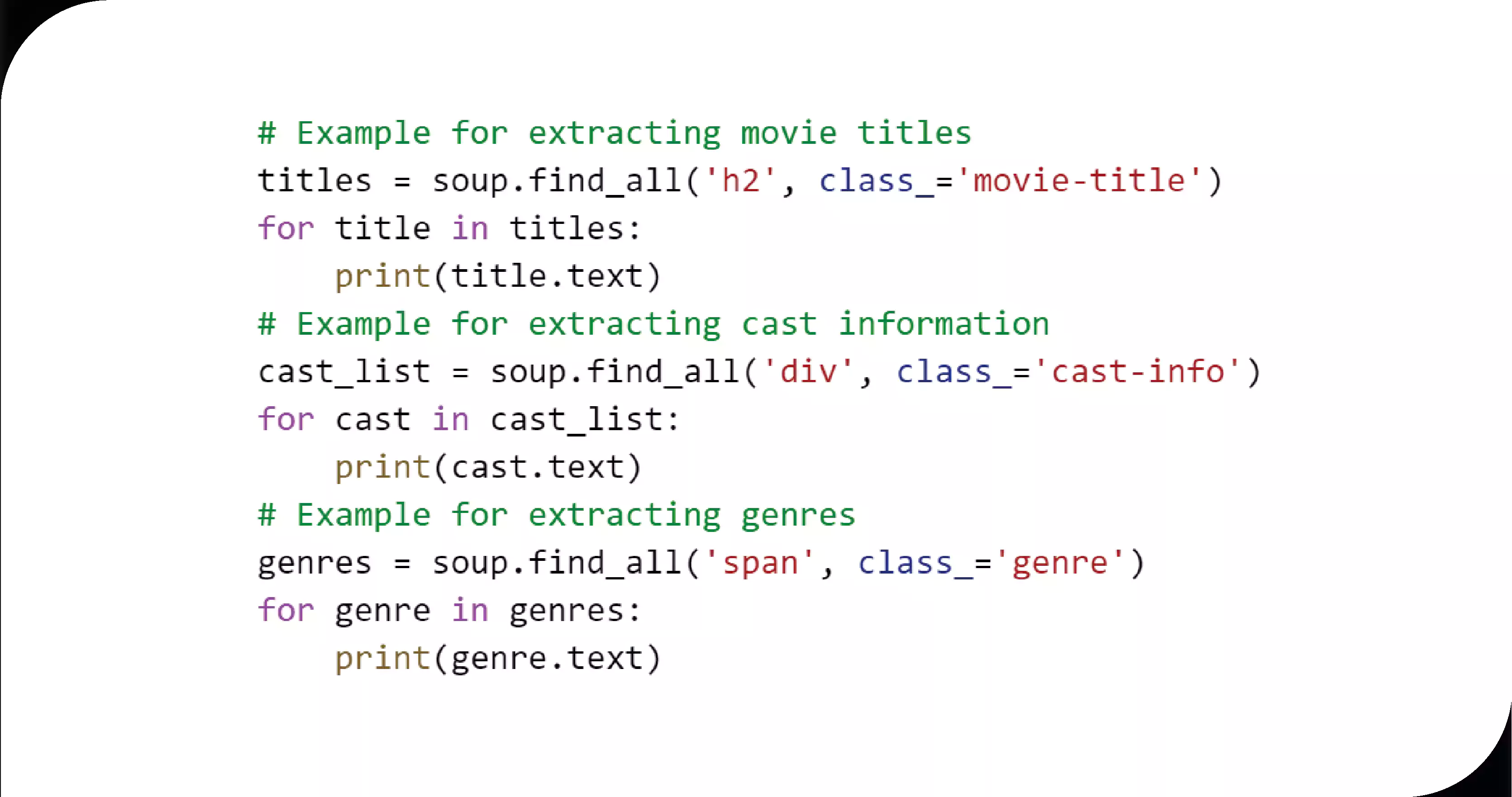
Handle Pagination (If Necessary):
• If the metadata is spread across multiple pages, identify the pagination structure and loop through the pages:
.web)
Step 5: Save the Scraped Data
1. Store Data in a CSV File:
• Use Python's csv module to save the scraped data:
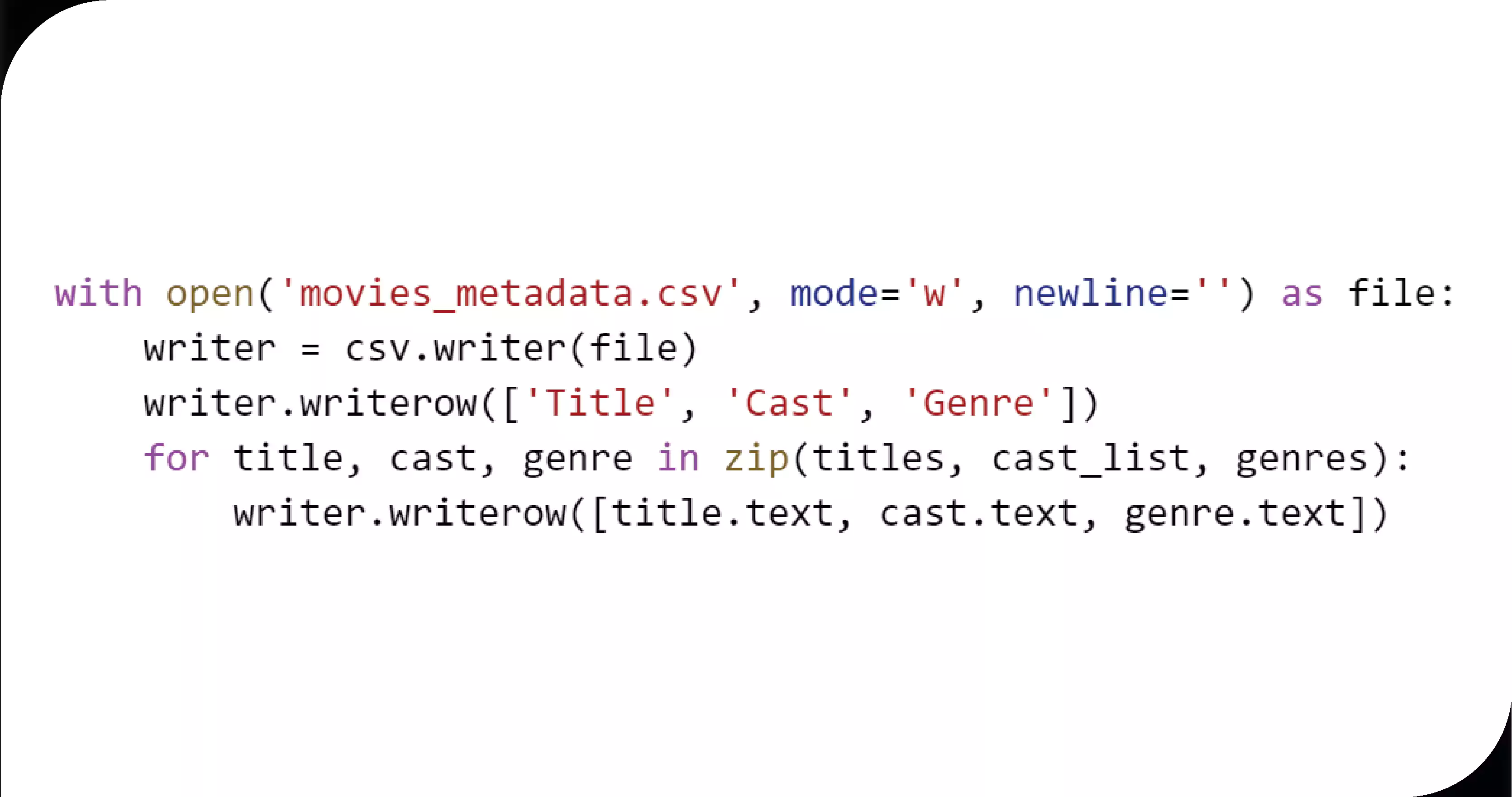
2. Store Data in a Database (Optional):
• If you need to manage large datasets, consider storing the metadata in a database like MySQL or SQLite.
Step 6: Implement Error Handling and Logging
1. Add Error Handling:
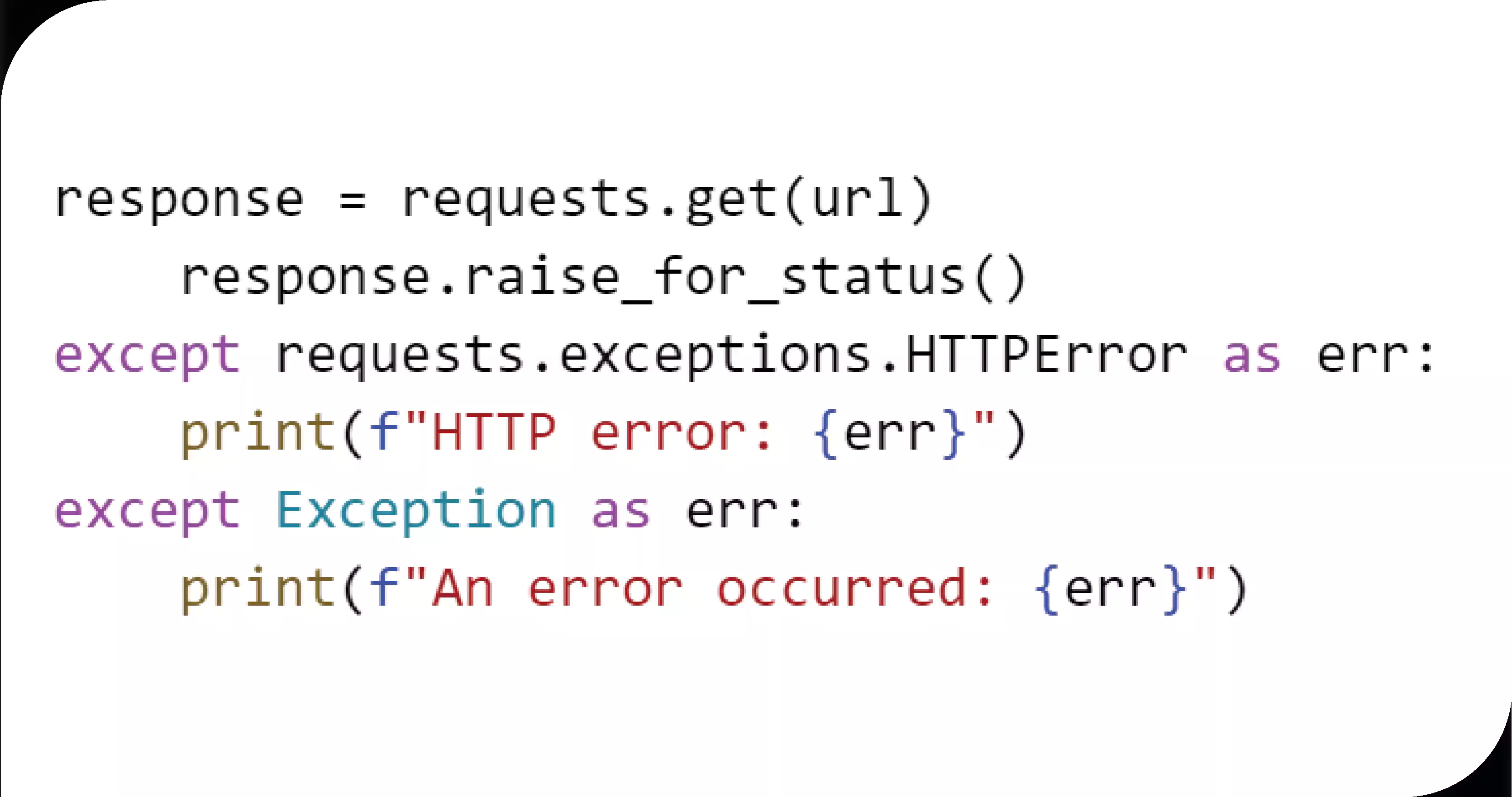
• Implement try-except blocks to handle potential errors during scraping, such as network issues or missing elements:

Log Scraping Activities:
• Use Python's logging module to log the scraping process, errors, and other relevant information:
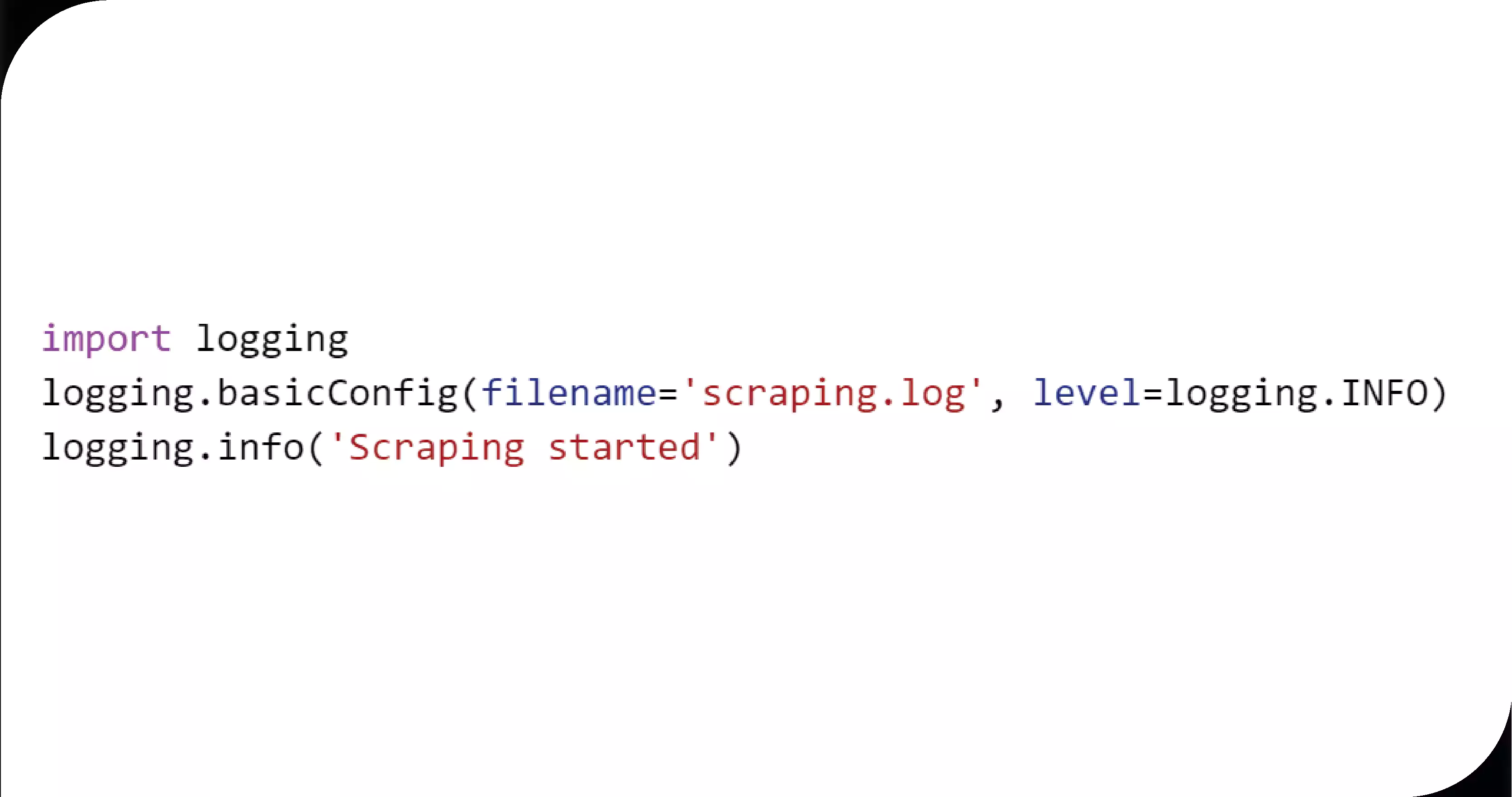
Step 7: Regularly Update the Scraping Script
1. Monitor Platform Changes:
• OTT platforms frequently update their interfaces, which may break your scraper. Check for changes in the HTML structure regularly and update your script accordingly.
2. Automate the Scraping Process:
• To automate the scraping process at regular intervals, use a task scheduler like cron (Linux) or Task Scheduler (Windows).
Step 8: Respect Ethical Considerations
1. Minimize Server Load:
• Be considerate of the platform's resources by including delays between requests
import time
time.sleep(2) # Sleep for 2 seconds between requests
2. Obtain Permissions (If Possible):
• Contact the platform for permission to scrape their data or explore their API offerings if feasible.
2. Anonymize Requests:
• Use proxies or a tool like Tor to anonymize your scraping activities and prevent IP blocking.
Step 9: Analyze and Use the Scraped Data
1. Data Analysis:
• Data analysis tools like Pandas or Excel can be used to analyze the scraped metadata.
• Create visualizations or reports to gain insights into content trends, user preferences, and more.
2. Integrate with Content Management Systems (CMS):
• Integrate the scraped metadata with your CMS to enhance content discovery, organization, and recommendation systems.
Step 10: Maintain and Scale the Scraping Solution
1. Regular Maintenance:
• Periodically review and update your scraping script to ensure it functions as expected.
2. Scalability:
• Consider using distributed scraping frameworks or cloud-based solutions to scale your operations if scraping large volumes of data.
Following this step-by-step guide, you can effectively scrape metadata such as movie titles, cast information, and genres from OTT platforms. This data can be leveraged to enhance content management, improve user experience, and gain valuable insights into the performance of media assets.
Applications of OTT App Scraping
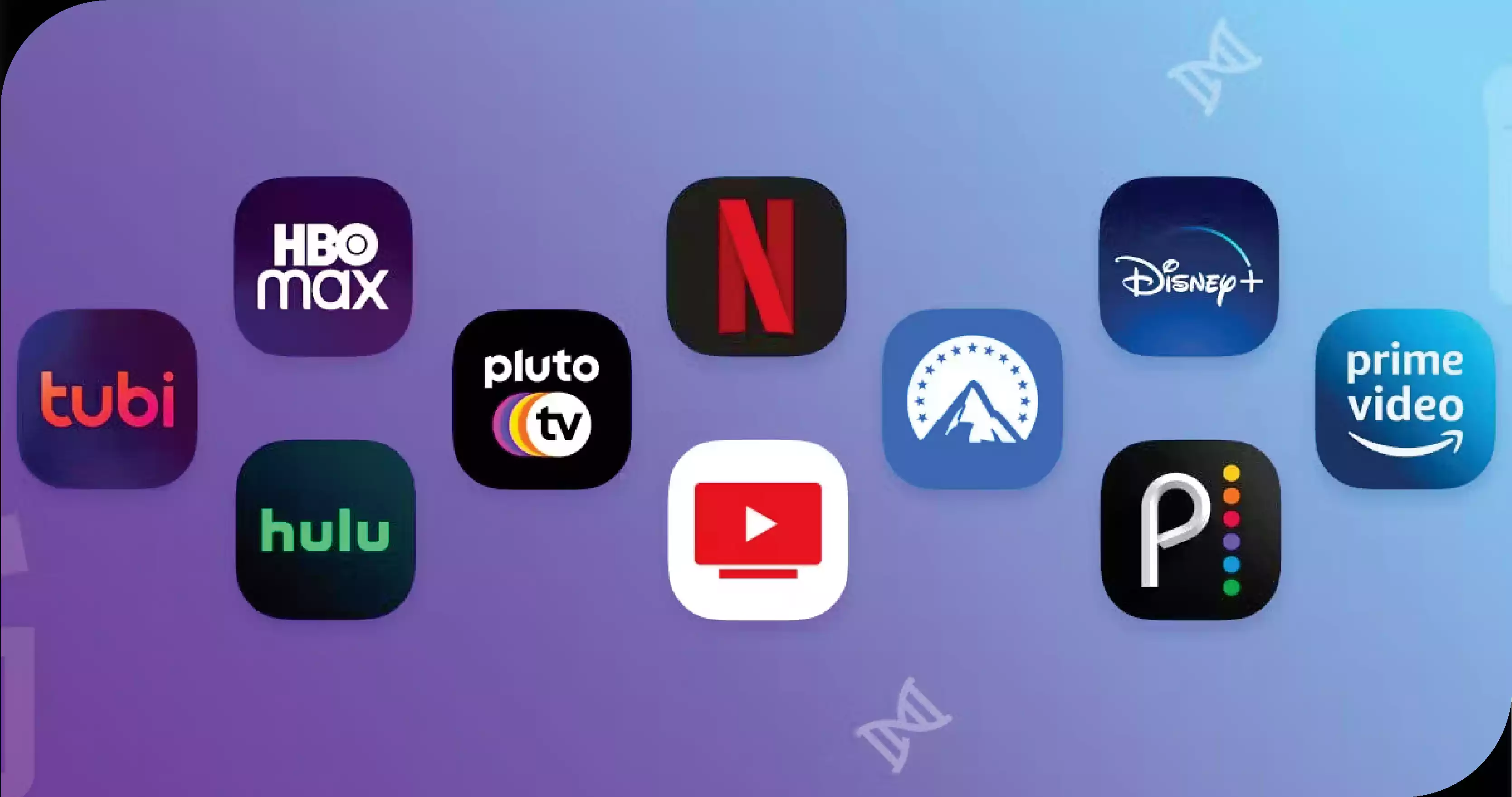
Scraping metadata from OTT apps has a wide range of applications in content management and beyond. Some of the critical use cases include:
1. Content Aggregation: Content aggregators can use scraped metadata to compile comprehensive catalogs of media assets from multiple OTT platforms. This lets users discover and access content from different sources in a unified interface.
2. Content Recommendation Systems: OTT platforms can enhance their recommendation engines by analyzing scraped metadata. Detailed metadata enables more accurate content recommendations based on user preferences, viewing history, and other factors.
3. Market Research and Competitive Analysis: Metadata scraping provides valuable insights into content trends, user preferences, and the performance of different media assets. This data can be used for market research, competitive analysis, and strategic decision-making in the media and entertainment industry.
4. Content Localization: Metadata scraping can support content localization efforts by providing information on the availability of media assets in different languages, regions, and formats. This allows OTT platforms to tailor their content offerings to diverse audiences.
5. Content Licensing and Acquisition: Studios, distributors, and OTT platforms can use scraped metadata to identify content performing well on other platforms. This information can inform decisions about content licensing, acquisition, and production strategies.
Challenges in OTT App Scraping

While OTT data scraper apps offer numerous benefits, it also presents several challenges. Some of the key challenges include:
1. Legal and Ethical Considerations: Scraping data from OTT platforms can raise legal and ethical concerns. Many platforms have terms of service that restrict scraping, and violating these terms can result in legal deed. It is essential to ensure that scraping activities comply with legal requirements and respect the intellectual property rights of content creators and distributors.
2. Technical Complexity: OTT platforms are designed with sophisticated technologies to deliver content seamlessly to users. Scraping these platforms requires overcoming technical barriers such as authentication mechanisms, dynamic content loading, and anti-scraping measures like CAPTCHAs and rate limiting.
3. Data Quality and Consistency: It is crucial to ensure the accuracy and consistency of the scraped metadata. Incomplete or incorrect metadata can lead to poor content management and user experience. An OTT data extractor must be designed to handle variations in data formats, missing information, and other inconsistencies.
4. Scalability: As OTT platforms expand their content libraries, the metadata volume to be scraped increases. Developing scalable scraping solutions that can handle large volumes of data efficiently is essential for maintaining up-to-date metadata.
Best Practices for OTT App Scraping
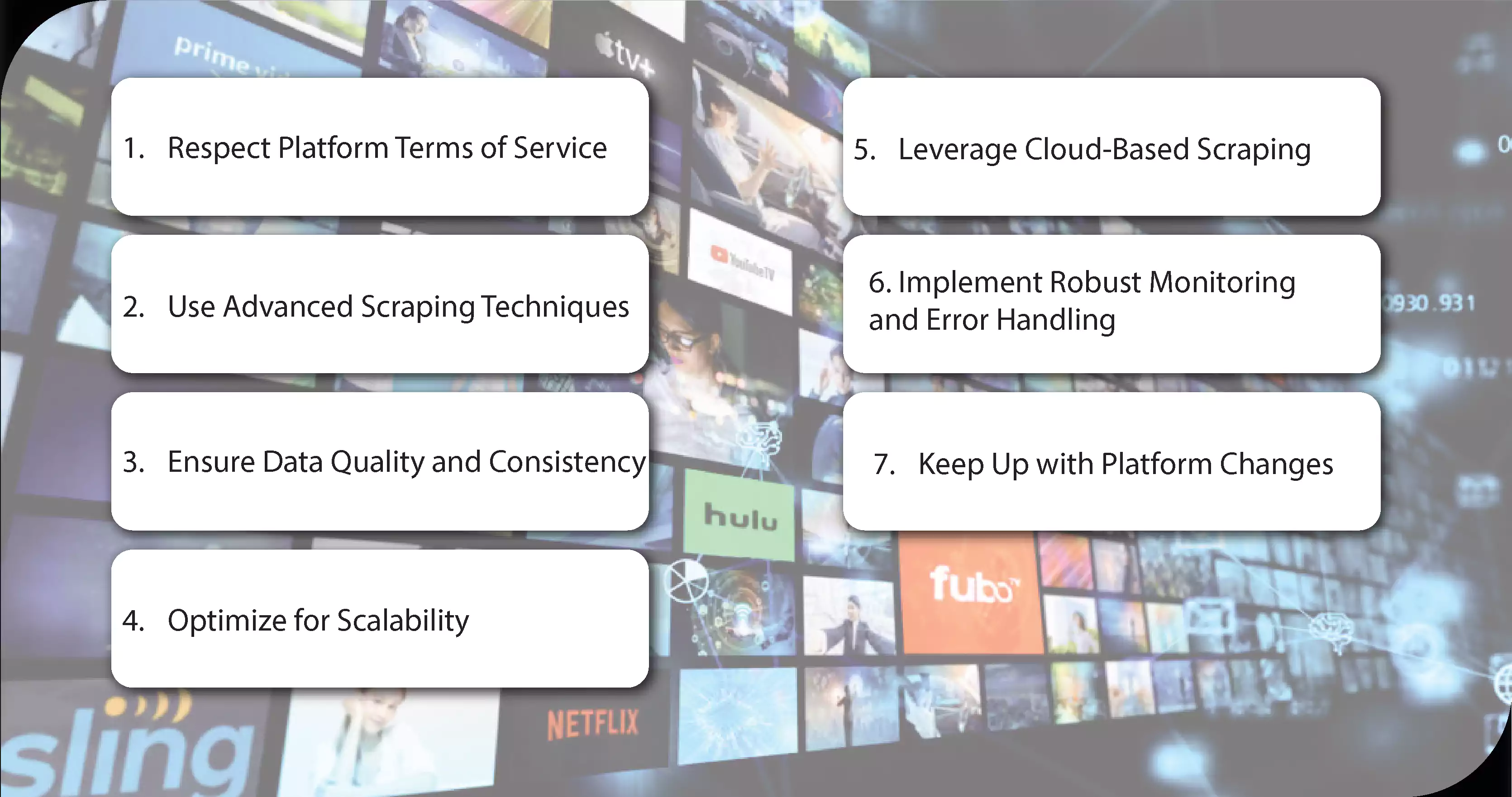
It is essential to follow best practices to overcome the challenges when you extract metadata from OTT apps effectively. Here are some key strategies to consider:
1. Respect Platform Terms of Service: Before scraping any OTT platform, review its terms of service to understand the legal implications of your actions. Some platforms may offer APIs that provide legal and structured access to metadata. If scraping is not explicitly prohibited, ensure your activities do not violate the platform's guidelines.
2. Use Advanced Scraping Techniques: Scraping OTT apps often requires advanced techniques to bypass technical barriers. For example, handling dynamic content loading may involve using headless browsers or browser automation tools like Puppeteer or Selenium. Implementing strategies to manage rate limits, avoid detection, and solve CAPTCHAs is crucial for successful scraping.
3. Ensure Data Quality and Consistency: Data quality is paramount when scraping metadata. Implement validation checks to ensure that the scraped data is accurate and complete. Use data cleaning techniques to handle inconsistencies, such as missing fields or varying data formats. Consider enriching the metadata by cross-referencing with external data sources to fill in gaps or correct inaccuracies.
4. Optimize for Scalability: As the content volume on OTT platforms grows, your scraping solution must be scalable. Distributed scraping frameworks like Scrapy or Apache Nutch can be used to extract large-scale data. Implement efficient data storage solutions, such as databases optimized for handling large datasets, to manage and organize the scraped metadata.
5. Leverage Cloud-Based Scraping: Cloud-based scraping solutions can offer significant scalability, performance, and reliability advantages. Services like AWS Lambda, Google Cloud Functions, and Azure Functions allow you to run scraping tasks in the cloud, reducing the need for local infrastructure and providing greater flexibility.
6. Implement Robust Monitoring and Error Handling: Monitoring the performance of your scraping tasks and implementing robust error handling mechanisms are essential for maintaining the quality and reliability of the scraped metadata. Set up alerts to detect issues such as failed requests, data inconsistencies, or changes in the platform's structure that may affect the scraping process.
7. Keep Up with Platform Changes: OTT platforms frequently update their interfaces, content delivery mechanisms, and anti-scraping measures. Staying informed about these changes and adapting your scraping strategies is crucial for continued success. Regularly update your scraping scripts to account for platform structure or content changes.
Conclusion:OTT app scraping is a powerful tool for extracting metadata that can significantly enhance content management and improve the user experience on OTT platforms. By following best practices and overcoming the challenges associated with scraping, content managers, data analysts, and marketers can harness the full potential of metadata to optimize content discovery, organization, and engagement.
Embrace the potential of OTT Scrape to unlock these insights and stay ahead in the competitive world of streaming!


